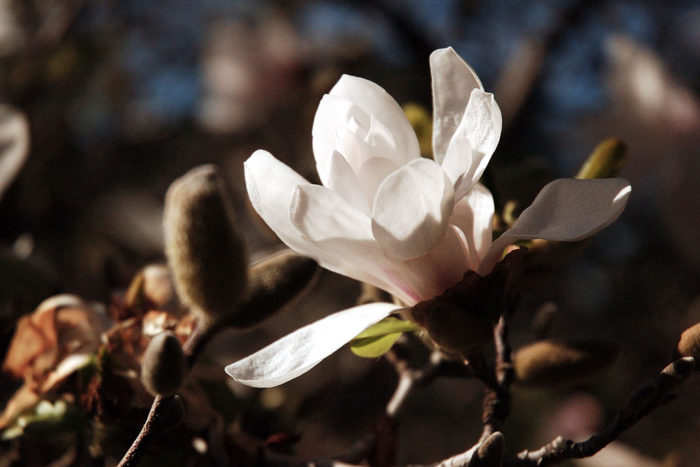
As days gradually lengthen and the February sun shines with a little more intensity, Northern California plant lovers see encouraging signs of life as their gardens slowly emerge from winter dormancy. Buds begin to swell, and the foliage of spring-blooming bulbs already stands tall, promising abundant blooms in the very near future. The weather is still unpredictable and certainly varies quite a bit from one part of the region to another, but for many of us, February is the month when we can plan on being outdoors more frequently, working toward getting the gardening year off to a great start!
In the ornamental garden
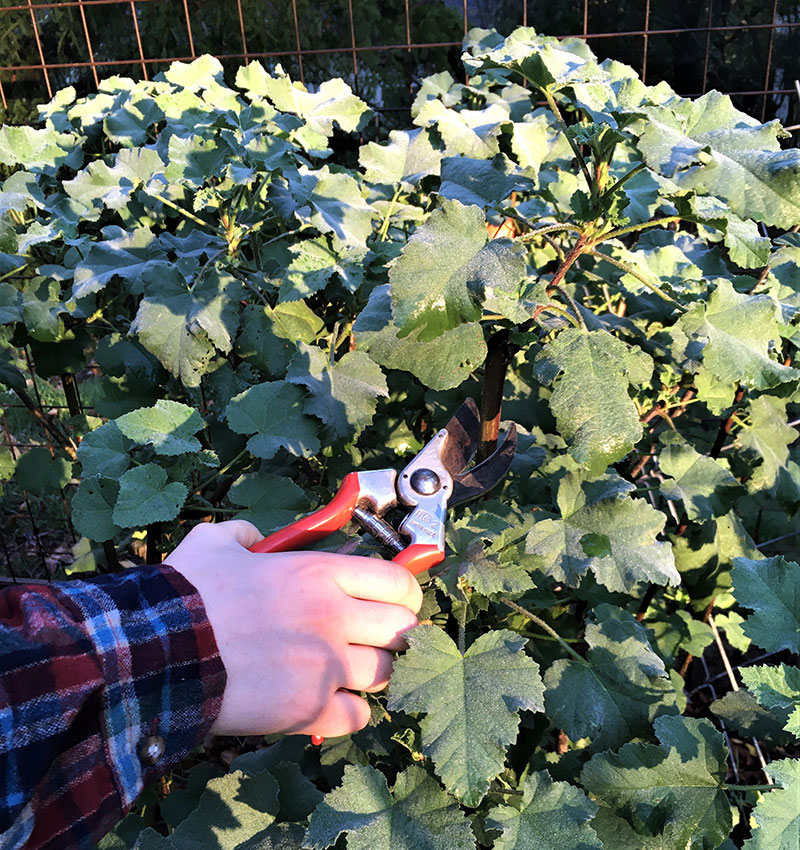
Prune all dormant summer- and fall-blooming trees and shrubs—those that bud and bloom on new wood. Clean out crossed branches and dead or damaged growth, then cut back those late-season flowerers—smoke bush (Cotinus spp. and cvs., Zones 4–9) and tree mallow (Lavatera × clementii cvs., Zones 5–9) for example—by as much as a third, encouraging prolific spring growth and abundant summer and fall color. Wait to prune spring-blooming trees or shrubs until they have finished flowering.
Cut back deciduous ornamental grasses to 2 to 4 inches from ground level, leaving just enough established growth to shelter tender new growth from an unexpected late winter chill.
Prune summer- and fall-flowering perennials while they haven’t yet started their growth cycle. Cut back to maintain size, improve shape, eliminate pest hiding places, and promote new growth and generous bloom production during the upcoming year. Become familiar with your flowering perennials and their growth habits. Do your research and learn how and when it’s best to prune your plants for optimal performance. And for winter- and spring-blooming perennials? Wait!

Plant cool-season annual flowers such as bachelor buttons (Centaurea cyanus, annual), marigolds (Calendula officinalis and cvs., annual), poppies (Papaver spp. and cvs., Zones 3–10), pansies (Viola × wittrockiana cvs., annual), violets (Viola spp. and cvs., Zones 3–9), and snapdragons (Antirrhinum majus and cvs., Zones 7–10). The resulting flower show will peak midspring and continue until summer. Plant your spring flower garden in a sunny location, and amend the soil well. Be prepared to irrigate during any unexpected heat wave or dry spell.
Fertilize your ornamental garden. Feed your now expertly pruned shrubs, trees, ornamental grasses, and flowering perennials with a well-balanced fertilizer, using organic products wherever possible. Mulch with organic compost for weed suppression, tidiness, and a steady nutrient boost while the mulch decomposes.
In the orchard
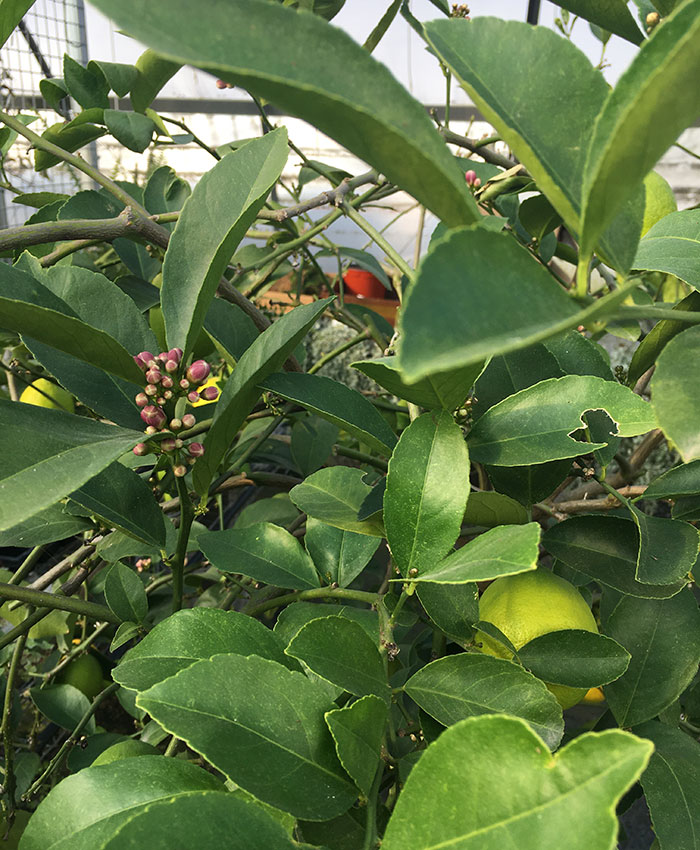
Fertilize fruit trees. In January, I advised that you prune and spray your deciduous fruit trees, and now it’s time to feed them! E. B. Stone Organics Citrus and Fruit Tree Food is an excellent fertilizer for both deciduous and evergreen fruit trees. Formulated using a blend of select natural and organic ingredients, it has easy-to-follow instructions and contains all the nutrients needed to promote new growth, healthy foliage, and bountiful crops for all your fruit producers. Mulch your trees after feeding using organic compost, E. B. Stone Organics Soil Booster, or well-aged manure.
Fertilize citrus trees. High-yielding citrus (Citrus spp. and cvs., Zones 9–11) trees are heavy feeders and require a regular flow of nutrients during the growing season. Soil fertility is key, and a regular fertilizing schedule—starting mid-February and using organic, specially formulated citrus fertilizers—is essential to ensure ongoing health and optimal fruit production from your citrus trees. E. B. Stone Organics Citrus and Fruit Tree Food works as well for your citrus trees as it does for your deciduous fruit-producers, containing all the essential nutrients needed. Note: If your citrus tree has yellow foliage, check first for green veining. If the veins are pure yellow, correct the problem with an application of nitrogen (E. B. Stone’s Fish Emulsion with Kelp is great). If you see green veining, your citrus tree needs iron. That’s easily remedied with the addition of chelated iron or FST.
Spray peach and nectarine trees. Spray your peaches and nectarines (Prunus spp. and cvs., Zones 4–8) with a fungicide to prevent peach leaf curl.
In the vineyard
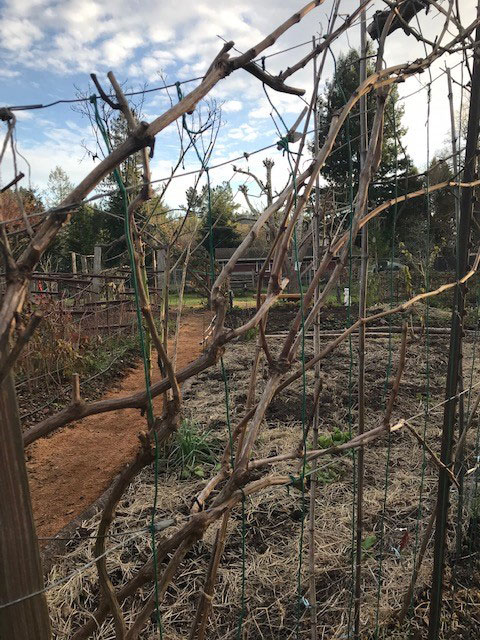
Prune your grapevines. Grapevines (Vitis spp. and cvs., Zones 3–9) must be cut back every year to ensure grape production. New fruits form only on buds that arise from the previous season’s growth, so whether you grow your grapevines along a fence line, trained on a stake, or up and over a sturdy arbor, keep that in mind at pruning time. There are a number of pruning methods recommended for grapes. Research online, or check with your local cooperative extension or nearby nursery for which pruning method best suits your grape variety, your particular growing method, and your gardening style.
Spray to prevent disease. If your vines are suffering from powdery mildew, spray immediately after pruning using a sulfur-based spray. Some grape varieties (Concord, for example) can be adversely affected by sulfur, however, so know your variety and check its tolerance.
In the edible garden
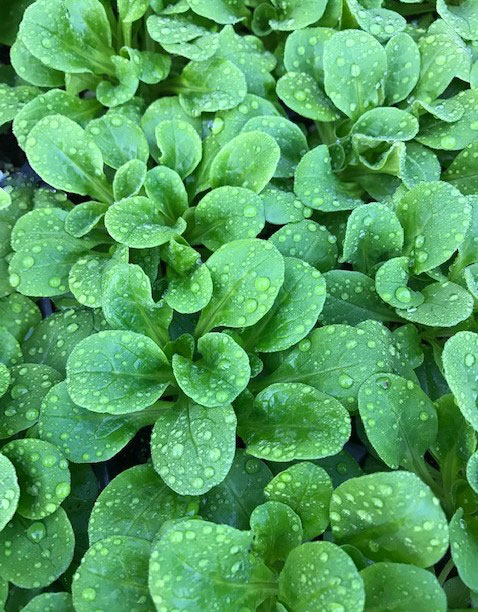
Plant bare-root asparagus, berries, horseradish, and rhubarb out now. Though each has slightly different soil and space requirements and growth habits, they’re all perennial, long-term food producers and have a few essential needs in common. All do best planted in full sun in rich, well-draining soil. Choose your planting location accordingly, and amend the soil with well-aged manure or compost, adding a handful of E. B. Stone Organics Sure Start at planting time for an extra boost of nutrients.
Direct-sow cool-weather veggies. Keep an eye on the forecast, but for many of us in the more coastal parts of NorCal, late February can be mild, with frequent sunny days warming the air and the soil during these last few weeks of winter. If the weather is favorable, you can direct-sow cool-weather vegetables such as fava beans, radishes, beets, carrots, mache, arugula, peas, and cold-hardy lettuces. Sturdy, cold-hardy starts, including Swiss chard, broccoli, kale, and spinach, can be transplanted out now too. Later in the month and indoors, begin seeding summer favorites such as tomatoes, peppers, and eggplants.
Keep on top of maintenance

Continue to monitor for slugs and snails. These slimy pests thrive in mild, damp weather, and February is their favorite month. Tell-tale evidence such as silvery trails or chewed-up foliage in your veggie or ornamental bed lets you know you’ve got a problem. Handpick and dispose of them if possible (my ducks love to snack on them), or scatter pet-safe bait. Sluggo is an excellent product and is safe to use around every creature except snails and slugs.
Stay on top of weeds. The same rains and milder temperatures loved by slugs and snails also encourages seed germination, whether they’re the seeds of deliberately sown vegetables or flowers, native wildflowers, or not-so-welcome annoying weeds. Luckily, February soil is soft, and weed seedlings are still shallow-rooted and easily removed. Stay on top of your weeding chores for an easier springtime in the garden.
Protect your frost-tender plants. February nights can still surprise us, so keep that frost cloth or anti-transpirant spray handy for a little while longer in case temperatures dip below freezing and your succulents, citrus, or other delicate plants need protection.
—Fionuala Campion is the owner and manager of Cottage Gardens of Petaluma in Petaluma, California.


















Comments
Log in or create an account to post a comment.
Sign up Log in